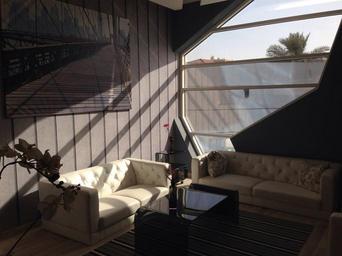Introduction
Art is more than just a visual experience; it’s an emotional journey that resonates deeply with our innermost thoughts and feelings. Selecting the right piece of art for your space can transform not only the aesthetic appeal but also the emotional ambiance of your home. In this extensive guide, we will explore the intricate relationship between emotional reflection and art, delving into various artistic styles and techniques, as well as offering practical advice on choosing pieces that align with your personal aesthetic and enhance your living environment.
Emotional Reflection in Art: How to Choose the Right Piece for Your Space
Choosing art is akin to selecting a mirror that reflects not just your taste but also your emotions and experiences. It involves understanding how different forms of visual storytelling can evoke feelings, whether joy, nostalgia, or contemplation. The key lies in recognizing what resonates with you personally when perusing various art forms—be it Fine Art Photography, Abstract Portraits, or Nature-Inspired Art.
Understanding Emotional Reflection in Art
Art has a unique ability to convey emotions. Whether through color palettes, subject matter, or artistic techniques, each piece tells its own story. Different styles evoke distinct feelings:
- Abstract Wall Art often stimulates curiosity and introspection. Colorful Portraits may inspire happiness or warmth. Thought-Provoking Imagery encourages deep reflection.
The Role of Color Palette in Design
One significant aspect of art that influences emotional responses is color. Each color carries its own psychological weight:
- Red can evoke passion or urgency. Blue often brings calmness and serenity. Yellow tends to stimulate energy and cheerfulness.
When choosing art, consider how these colors interact with your existing decor and how they might shift the mood within your space.
How Different Art Techniques Shape Emotional Responses
The technique used by an artist can dramatically alter how a piece is perceived emotionally. Here are some notable methods:
Fine Art Photography
Using sophisticated photography techniques helps capture moments that resonate with viewers profoundly. It can immortalize fleeting emotions or memories tied to personal experiences.
Linocut Printing Techniques
This method creates unique textures and patterns that might evoke nostalgia or comfort through their handcrafted nature.
Woodblock Printing Techniques
These prints often feature bold shapes and designs that can instill a sense of tradition while simultaneously providing a modern touch.

Creating Your Own Aesthetic Trends in Art
As you curate your collection, think about current aesthetic trends within home interior design:
Minimalist Decor – Emphasizes simplicity. Eclectic Art Collections – Celebrates diversity. Modern Home Decor – Balances contemporary style with functionality.Decide which trend aligns best with your personality and space before making any purchases.
Incorporating Everyday Spaces in Art Selection
Your choice should reflect not only the atmosphere you want to create but also how you intend to use the space:

Living Room
For gathering spaces where family interacts, consider larger canvases featuring vibrant color compositions to enhance sociability.
Bedroom
Opt for soothing pieces—perhaps Abstract Portraits—that promote relaxation and peace during rest periods.
Home Office
Artistic wall hangings that spark creativity can be beneficial in workspaces. Think about thought-provoking imagery that inspires productivity without being distracting.
Gallery Wall Inspiration: Creative Display Techniques
A gallery wall is a fantastic way to showcase multiple pieces harmoniously:
- Use varying sizes for visual interest. Incorporate both framed photography and decorative art prints for texture. Lay out before hanging; try different arrangements until it feels right emotionally and visually.
Photography as Decor: Capturing Moments in Photography
Photography adds a personal touch because it often captures moments meaningful to the homeowner. Consider these tips when integrating photographic elements into your decor:
Choose images that tell your story—travel photographs, family portraits, or shots of significant events. Experiment with framing options; custom wall art frames can elevate even simple photographs into stunning decor pieces.Art for Mood Enhancement: Understanding Your Needs
What mood do you wish to instill through your artwork? The answer guides your choices immensely:
- For relaxation, lean towards serene landscapes or soft abstract forms. For inspiration, select dynamic compositions full of energy.
Vibrant Color Compositions vs. Minimalist Decor
Are you torn between vibrant hues versus minimalistic tones? Here’s how they differ emotionally:
| Style | Emotional Response | |--------------------|---------------------------------------| | Vibrant Color Compositions | Energizing; cheerful | | Minimalist Decor | Calming; focused |

Both have merits, so think about what best complements not only the room’s purpose but also how you feel when present in those spaces.
Framed Photography: Bringing Personal Touches Home
Framed photography allows individuals to connect emotionally through personal narratives—family gatherings captured forever on walls resonate more than generic artworks might ever do.
Tips for Choosing Framed Photography
Select images reflecting cherished memories or milestones. Use consistent framing styles across different photographs for cohesion while allowing individual stories to shine through.FAQs About Choosing Art
What type of art is best for my living room?- Larger canvases with vibrant colors tend to encourage social interaction while adding warmth.
- Original pieces offer uniqueness but prints allow broader exploration without breaking the bank; choose based on priority!
- Regularly updating keeps spaces fresh! Consider seasonal shifts or personal changes as cues for a new look.
- Absolutely! Mixing styles creates interest while showcasing personality; aim for balance rather than matching exactly!
- While it's essential not overclutter visually, strategic placement maximizes impact without overwhelming viewers’ senses!
- Keep away from direct sunlight & humidity; if necessary frame under UV-protective glass ensuring longevity!
Conclusion
Selecting artwork isn’t merely about aesthetics—it embodies emotional connections reflecting who we are at our core! With an understanding of various artistic styles like Fine Art Photography and Abstract Portraits alongside thoughtful consideration regarding space usage & moods desired—choosing becomes less daunting! From colorful portraits enlivening rooms filled with laughter to minimalist decor calming chaotic minds—art truly http://curiositycorner884.tearosediner.net/color-your-identity-using-color-and-texture-in-interior-decor transforms our homes into heartfelt sanctuaries celebrating individuality every step along life’s path!
In navigating this journey towards creating spaces infused deeply with emotion through curated collections—remember always honor YOUR voice above all else! After all—it's YOUR sanctuary!